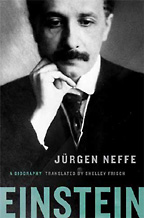Constructal Theory of Everything?
 Sunday, July 8, 2007
Sunday, July 8, 2007  A very interesting text that describes what appears to be a bold new approach to modeling many possible systems - even human ones - is about to be released. Titled Constructal Theory of Social Dynamics and edited by Adrian Bejan and Gilbert W. Merkx, the text "brings together for the first time social scientists and engineers to develop a predictive theory of social organization, as a conglomerate of mating flows that morph in time to flow more easily (people, goods, money, energy, information). These flows have objectives (e.g., minimization of effort, travel time, cost), and the objectives clash with global constraints (space, time, resources). The result is organization (flow architecture) derived from one principle of configuration evolution in time (the constructal law): "for a flow system to persist in time, its configuration must morph such that it provides easier access to its streams."
A very interesting text that describes what appears to be a bold new approach to modeling many possible systems - even human ones - is about to be released. Titled Constructal Theory of Social Dynamics and edited by Adrian Bejan and Gilbert W. Merkx, the text "brings together for the first time social scientists and engineers to develop a predictive theory of social organization, as a conglomerate of mating flows that morph in time to flow more easily (people, goods, money, energy, information). These flows have objectives (e.g., minimization of effort, travel time, cost), and the objectives clash with global constraints (space, time, resources). The result is organization (flow architecture) derived from one principle of configuration evolution in time (the constructal law): "for a flow system to persist in time, its configuration must morph such that it provides easier access to its streams."
Begin and Merkx are from Duke. The Duke press release is very enticing - this is certainly a text that will serve as a reference for the chaos and fractals course, or perhaps a primary source.
Some tantalizing tidbits:
Why does a railway network look like a river? Why do the streets of old Rome look like a leaf? Because whether their shape is determined by the interactions of molecules or the choices made by individual humans, all of these systems of flow are governed by a relatively simple new principle of thermodynamics.











